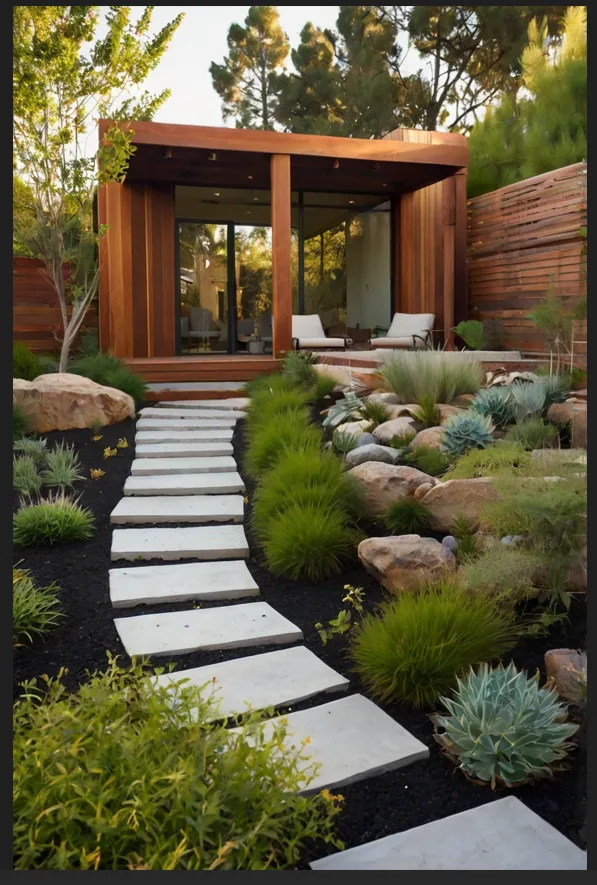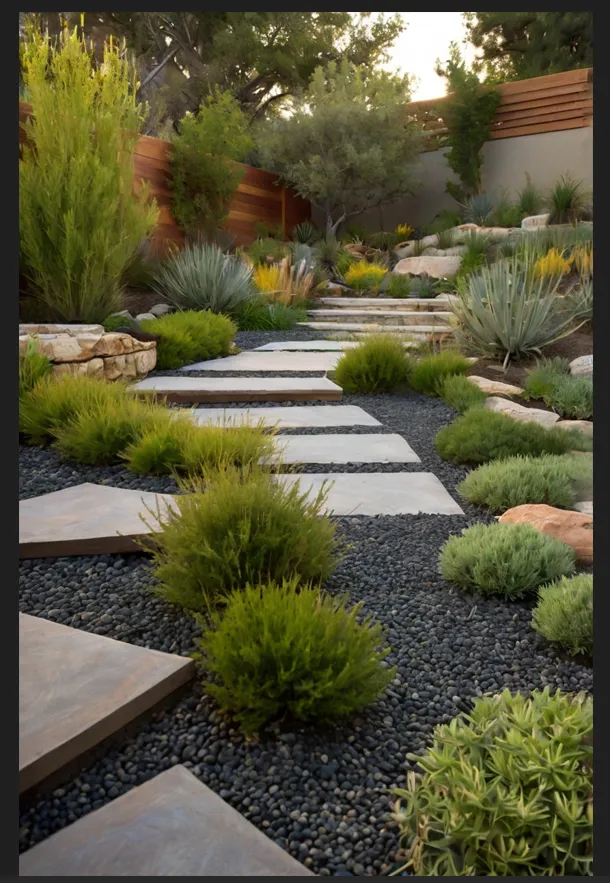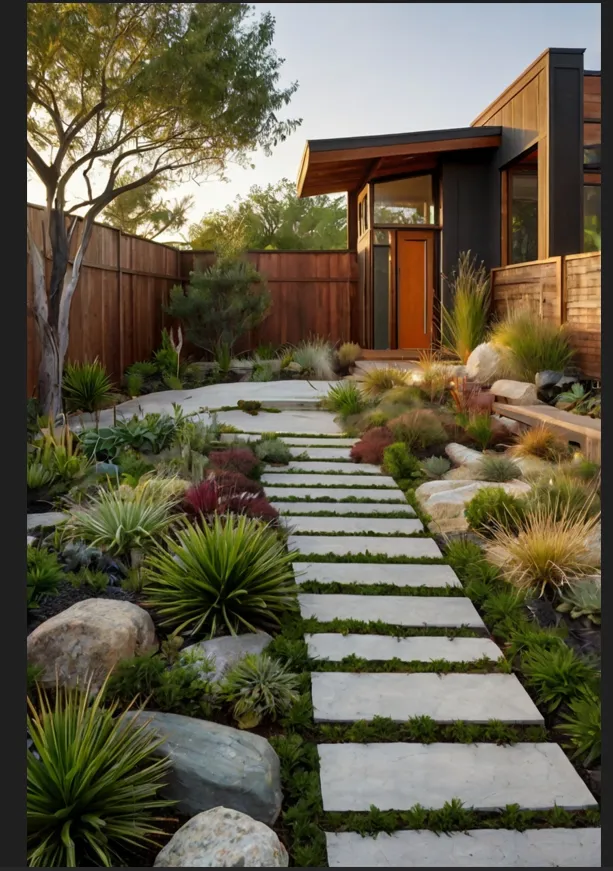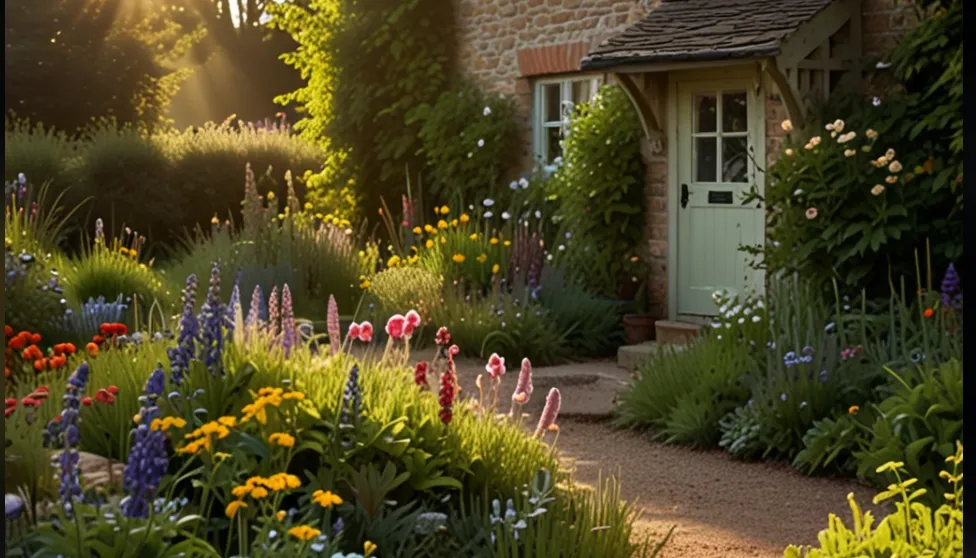Advertisement
Creating a sustainable yard is no longer just about aesthetics—it’s also about saving money, conserving water, and increasing home value. By designing with native plants, drought-tolerant landscaping strategies, and eco-friendly yard upgrades, homeowners can reduce maintenance costs while boosting curb appeal.
Why Choose Native Plants for Your Landscape?

This image is by AI for inspiration only.
Native plants are adapted to local soil and weather conditions, meaning they require less irrigation, fewer fertilizers, and minimal pest control. For example:
In California, manzanita and California poppy thrive with almost no watering.
In Texas, drought-resistant sage varieties are popular for both beauty and resilience.
👉 Homeowners who switch to native landscaping services often see long-term savings on yard maintenance costs and reduced water bills. Many insurance companies even offer home insurance discounts when you upgrade to eco-friendly, fire-resistant plants.
Understanding Drought-Tolerant Landscaping
Drought-tolerant design focuses on selecting plants and irrigation systems that can thrive with minimal water use.
University of Arizona research found homeowners reduced outdoor water use by up to 50% after switching to drought-tolerant plants.
Cities like Phoenix and Las Vegas even offer rebates for lawn replacement costs when residents remove turf and install water-wise landscaping.
This means sustainable landscaping is not just eco-friendly—it’s also financially smart.
Designing with Xeriscaping Principles

This image is by AI for inspiration only.
Advertisement
Xeriscaping is a proven landscaping method that lowers or even eliminates the need for traditional irrigation. Core principles include:
Careful planning and design.
Soil improvement to support water retention.
Advertisement
Efficient irrigation systems (like drip irrigation installation services).
Choosing drought-resistant plants and ground covers.
👉 In Denver, xeriscaping has become so popular that landscaping contractors now specialize in water-smart designs that also increase property resale value.
Incorporating Succulents and Cacti
Succulents and cacti aren’t just trendy—they’re long-term, low-maintenance investments.
Agave and aloe vera are favorites for modern yards.
Barrel cacti and prickly pear add bold shapes and textures.
Many homeowners combine succulents with solar outdoor lighting and stone patio remodeling to create stylish, low-water gardens that also save on utility costs.
Creating Wildlife-Friendly Gardens

This image is by AI for inspiration only.
A sustainable landscape also supports local wildlife. Adding native flowering plants such as coneflowers, milkweed, or lavender helps attract pollinators like bees and butterflies.
According to the National Wildlife Federation, landscapes designed with native plants provide healthier food sources for wildlife than exotic alternatives. This not only benefits the ecosystem but also enhances your yard’s natural beauty.
Addressing Common Concerns
Design limitations? Native and drought-tolerant plants come in endless colors and textures—your creativity isn’t restricted.
Maintenance? Once established, sustainable yards are easier to maintain than traditional lawns.
Cost? While initial yard drainage solutions or soil preparation services may seem expensive, long-term savings on water bills and lawn replacement costs make it a profitable investment.
Switching to sustainable landscaping is a win-win:
Lower bills on water and yard maintenance.
Higher property value with eco-friendly upgrades.
Compliance with modern water-conservation policies.
Whether you’re considering hiring landscaping contractors, installing drip irrigation systems, or simply adding a few drought-tolerant plants, every step toward sustainability creates a more resilient, valuable, and eco-friendly home.


